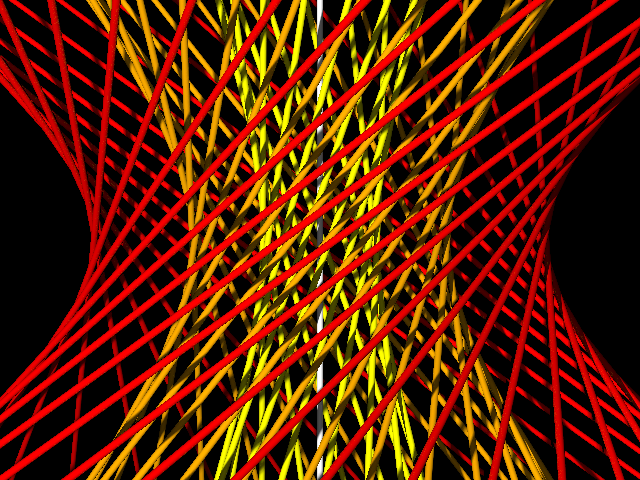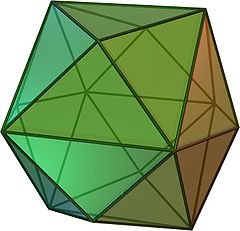Authors: Zehua Lai, Lek-Heng Lim, Tianyun Tang
We show that linearly constrained linear optimization over a Stiefel or Grassmann manifold is NP-hard in general. We show that the same is true for unconstrained quadratic optimization over a Stiefel manifold. We will establish the nonexistence of FPTAS for these optimization problems over a Stiefel manifold. As an aside we extend our results to flag manifolds. Combined with earlier findings, this shows that manifold optimization is a difficult endeavor -- even the simplest problems like LP and unconstrained QP are already NP-hard on the most common manifolds.
Last Update
-
 arXiv: Computational Complexity
arXiv: Computational Complexity
-
 arXiv: Computational Geometry
arXiv: Computational Geometry
-
 arXiv: Data Structures and Algorithms
arXiv: Data Structures and Algorithms
-
 Aaron Roth
Aaron Roth
-
 Adam Sheffer
Adam Sheffer
-
 Adam Smith
Adam Smith
-
 Andrew McGregor
Andrew McGregor
-
 Banach's Algorithmic Corner
Banach's Algorithmic Corner
-
 Ben Recht
Ben Recht
-
 bit-player
bit-player
-
 CCI: jobs
CCI: jobs
-
 CS Theory Events
CS Theory Events
-
 Computational Complexity
Computational Complexity
-
 David Eppstein
David Eppstein
-
 David Pritchard
David Pritchard
-
 Decent Descent
Decent Descent
-
 Decentralized Thoughts
Decentralized Thoughts
-
 DifferentialPrivacy.org
DifferentialPrivacy.org
-
 ECCC Papers
ECCC Papers
-
 Emanuele Viola
Emanuele Viola
-
 Ernie's 3D Pancakes
Ernie's 3D Pancakes
-
 Foundation of Data Science - Virtual Talk Series
Foundation of Data Science - Virtual Talk Series
-
 Francis Bach
Francis Bach
-
 Gil Kalai
Gil Kalai
-
 Glencora Borradaile
Glencora Borradaile
-
 Google Research Blog: Algorithms
Google Research Blog: Algorithms
-
 Gradient Science
Gradient Science
-
 Grigory Yaroslavtsev
Grigory Yaroslavtsev
-
 Hung Le
Hung Le
-
 James R. Lee
James R. Lee
-
 Kamathematics
Kamathematics
-
 Luca Aceto
Luca Aceto
-
 Luca Trevisan
Luca Trevisan
-
 MIT CSAIL Student Blog
MIT CSAIL Student Blog
-
 Michael Mitzenmacher
Michael Mitzenmacher
-
 Moritz Hardt
Moritz Hardt
-
 Muthu Muthukrishnan
Muthu Muthukrishnan
-
 Nisheeth Vishnoi
Nisheeth Vishnoi
-
 Noah Stephens-Davidowitz
Noah Stephens-Davidowitz
-
 Off the Convex Path
Off the Convex Path
-
 Paul Goldberg
Paul Goldberg
-
 Property Testing Review
Property Testing Review
-
 Richard Lipton
Richard Lipton
-
 Sébastien Bubeck
Sébastien Bubeck
-
 Scott Aaronson
Scott Aaronson
-
 Simons Institute Blog
Simons Institute Blog
-
 TCS+ Seminar Series
TCS+ Seminar Series
-
 TOC for Fairness
TOC for Fairness
-
 The Geomblog
The Geomblog
-
 The Learning Theory Alliance Blog
The Learning Theory Alliance Blog
-
 Theory Dish: Stanford Blog
Theory Dish: Stanford Blog
-
 Theory Matters
Theory Matters
-
 Thomas Vidick
Thomas Vidick
-
 Turing's Invisible Hand
Turing's Invisible Hand
-
 Windows on Theory
Windows on Theory
OPML feed of all feeds.
Subscribe to the Atom feed, RSS feed to stay up to date.
Thank you to arXiv for use of its open access interoperability.
Note: the date of arXiv entries announced right after publication holidays might incorrectly show up as the date of the publication holiday itself. This is due to our ad hoc method of inferring announcement dates, which are not returned by the arXiv API.
Powered by Pluto.
Source on GitHub.
Maintained by Nima Anari, Arnab Bhattacharyya, Gautam Kamath.








